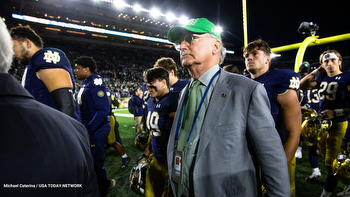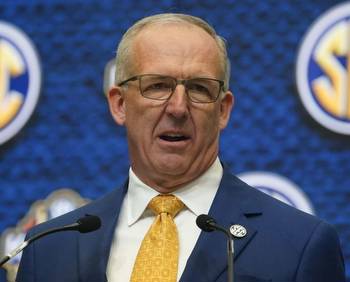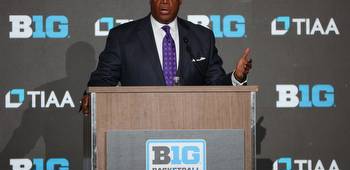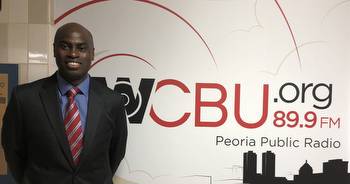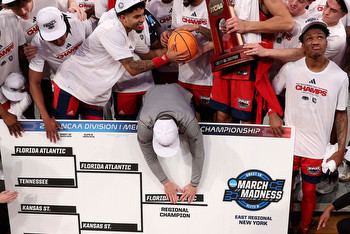Five issues facing Akron, Cleveland State, Kent State athletics
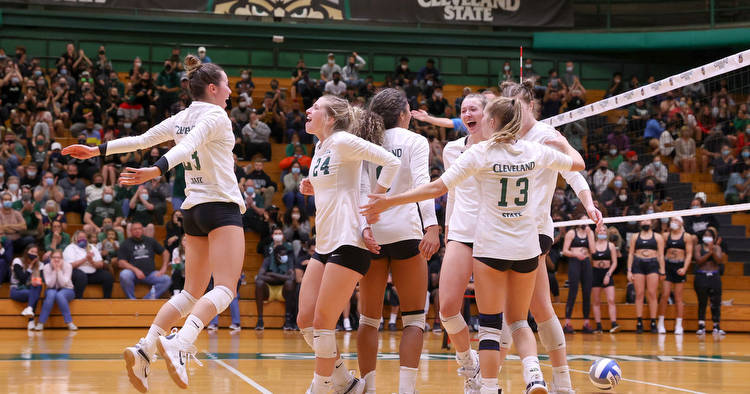
One of Randale Richmond's favorite sayings is, "I try not to borrow trouble from the future."
The Kent State athletic director is usually smiling when he says it — "That's how I keep my anxiety down," he adds — but just because he doesn't agonize about the future doesn't mean he doesn't prepare for it.
"We talk all the time about the future landscape of college athletics could be, and what that means for Kent State University, and how we need to be prepared for that," he said.
The same is true at Northeast Ohio mid-majors such as Akron and Cleveland State, who are navigating a Division I landscape that is undergoing massive changes, from Name, Image and Likeness opportunities to legalized gambling to increased exposure for women's athletics to conference movement (and consolidation), and more.
Crain's recently spoke with the athletic directors at those schools — Richmond, Scott Garrett (CSU) and Charles Guthrie (Akron) — about those topics, as well as their thoughts about potentially expanding the NCAA basketball tournament.
Here's what they said.
NCAA tournament expansionEarlier this year, the NCAA Division I transformation committee suggested that team sports sponsored by more than 200 institutions consider expanding their postseason fields to 25% of the teams that meet the standard in the sport.
That's a very academic way of saying that if you have 363 Division I basketball teams, you should consider expanding the tournament from 68 teams to about 90. (Or even 96, since that would make bracketing easier.)
In theory, expansion would be a no-brainer for the Mid-American Conference (which includes Akron and Kent) and the Horizon League (CSU). The MAC hasn't placed two teams in the men's tournament since 1999, while the Horizon League hasn't done so since 2009. The SEC and the Big Ten, by contrast, each had eight teams in this year's tournament alone. More berths means for those conferences.
"That always sounds good," Richmond said of expansion. "But I think when you expand it, it's not the Kent States and the Mid-American Conference schools that get in, it's probably some of those other (Power Five) schools. I'm not sure that's the answer."
If the tournament does expand, Garrett would like to see automatic bids go to regular-season champions that don't win their conference tournament. Currently, only the MAC/Horizon conference tournament champions get automatic bids, which was a good deal this season for tournament champions Kent and Northern Kentucky, but not for regular-season champions Toledo (MAC) and Youngstown State (Horizon).
Those regular-season champions do get automatic berths in the NIT, the basketball equivalent of when "Jeopardy!" gave losers a year's supply of Rice-A-Roni.
"There's so much at risk in a one-bid league," Garrett said. "You can have a really awesome season and win the regular-season championship, then you have one bad game over the weekend in March, and you're not able to celebrate that special season. Maybe there's a way to roll all those NIT slots into the main NCAA tournament."
The key, Garrett said, is not to mess up a good thing.
"This tournament is special and has such a strong tradition," he said. "But it has gone through expansion as Division I has grown. Depending on how it's structured, it could be advantageous for schools like us."
Women's sportsThis year's NCAA women's basketball tournament championship between LSU and Iowa averaged 9.92 million viewers, shattering the previous record of 5.7 million for a women's tournament game, set in 2002 when UConn beat Oklahoma for the title. This year's tournament also set a record for highest tournament attendance at 357,542.
It was seen as a breakthrough for women's sports at the college level, which has spent decades fighting for equal treatment when it comes to things like media coverage, revenue and resources.
"Women's basketball, softball, volleyball and gymnastics — people are starting to see the individual value of some of these female sports, and that's a beautiful thing," Richmond said. "There's a long history of Kent State success in these sports. Kent State in 1910 started as a women's college, so for us, it's personal. It tells a great story about the power of access and opportunity and the product that you can then provide."
Cleveland will host the women's Final Four in 2024, and Garrett said CSU plans to involve its athletes, students and fans in the programming around the event. Garrett also wants to build on the success of this year's women's basketball team, which had a 16-game winning streak and made the NCAA tournament for the first time since 2010.
But while local initiatives are good, the growth in women's sports must happen at the national level, which is why Guthrie wants to see the NCAA do a better job marketing the women's basketball tournament.
"The women's NCAA tournament is starting to show some value through all the eyeballs on the game," he said. "I'm interested to see how our organization handles the upcoming contract with NCAA women's basketball and some of our other women's sports. Softball is off the charts on television. Volleyball is attracting big crowds. Those are growth opportunities for our organization as well."
Conference consolidationThe MAC is the most stable conference in the country, with its 12 full members all joining between 1946 and 1998. The Horizon League hasn't been quite as lucky, with former members like Butler, Loyola-Chicago, Valparaiso and Illinois-Chicago all moving to higher-profile leagues since 2012. But the Horizon at least makes geographical sense, unlike the Big Ten, which is about to stretch from New Jersey to California. Adding USC and UCLA might work when you're filling a 12-game football schedule with Saturday games, but it doesn't work for other sports.
"I'm hoping common sense takes over in college athletics," Guthrie said. "Even if we go to a pro model, the New York Yankees aren't always going all the way out to L.A. to play the Dodgers. The New York Mets play a regional schedule in their backyard, which keeps their players healthy, keeps travel light, preserves careers and allows their families to actually go to an away game without having to travel 3,000 miles."
Akron, CSU and Kent aren't looking to move conferences, but they're very aware of how conference movement affects their their leagues. The Power Five conferences — the Big Ten, SEC, ACC, Big 12 and Pac-12 — are getting bigger and richer, which makes it harder for mid-major schools to compete when it comes to TV contracts, facilities, NIL opportunities and more.
"We're always paying attention," Guthrie said. "As I've said before, if you continue to drive a yellow cab in a world with Lyft and Uber, you're going to be left behind. The (MAC) commissioner realizes that and understands that. We can't sit back and think that realignment isn't going to knock on our door or impact us."
Case in point: The MAC nearly added Western Kentucky and Middle Tennessee State two years ago when Conference USA was on the verge of collapse.
"There are a lot of things that are enviable about us as a conference," Richmond said. "With that being said, the commissioner's job is to always see if there are other opportunities out there that make sense for our purpose and our mission as a conference."
Name, Image and LikenessAll three universities have partnered with Opendorse to create school-specific NIL platforms over the past year, allowing student-athletes to capitalize on opportunities while adhering to state law and NCAA regulations.
But NIL is still in the Wild West stage. This is where being a mid-major actually can be an advantage, Garrett said, since their athletes aren't earning million-dollar NIL deals.
"The mid-majors and lower-visibility Division I schools have a little bit of a longer runway to figure things out," he said. "It's not affecting us as rapidly from a competitive standpoint, but we also need to make sure we're competitive amongst our peers. We're not an Ohio State or Cincinnati, but we need to pay attention to what's happening at schools like Toledo, Bowling Green and Miami."
Guthrie believes the NIL market will sort itself out in time, comparing it to Hollywood or the music industry "who have been doing Name, Image and Likeness very well for a long time," he said.
"Michael Jackson signed with a record company, and even though he sold a lot of records at one point, he was compensated based on the deal he signed," he said. "He renegotiated later on down the line as his records got bigger and bigger.
"The challenge we have with Name, Image and Likeness right now is that everybody is throwing out dollar figures and nobody knows the true value of it. Statistics could say that a basketball player is worth $800,000, but where is that data to suggest that? There is no data."
And if a player does prove to be worth $800,000 or $1 million? Nobody will complain about them getting paid that amount, Guthrie said.
"But if you're on Instagram and you've supposedly got 300,000 followers and only 20,000 are authenticated, is that really your value?" Guthrie said.
GamblingLast month, the NCAA's Division I legislative committee announced more lenient guidelines to some of its gambling policies. Student-athletes can still permanently lose their college eligibility if they're found to be throwing games, influencing outcomes, providing insider information to bettors or wagering on their own games or other sports at their school.
But the punishments aren't as harsh for other infractions. For instance, athletes who gamble on their own sports at other schools will be required to take educational classes on sports wagering and could be suspended for 50% of the season. As for athletes who wager on pro sports, the NCAA's punishment will depend on the amounts wagered.
The NCAA's previous guidelines stipulated that, in most cases, student-athletes who wagered on sports at any level would lose one full season of college eligibility.
"Gambling is a significant concern," Garrett said. "We've got our heads in the sand if we don't think there are student-athletes and staff members around the country who are getting caught up in these situations. It's really critical for us to make sure we're being proactive in terms of education and making sure people know the ramifications (of gambling)."
Garrett believes schools could eventually work with Ohio's gaming commission and the sports betting companies, furnishing lists of student-athletes, coaches and staffers who aren't eligible to gamble.
"That way, if someone in Ohio has that name and gets flagged, they could look at that activity and partner with the institutions to examine whether that's somebody has received education and shouldn't have been gambling, so it doesn't become a problem and they're also upholding the integrity of the games," Garrett said. "We've got to hammer the education part, but we've got to have other proactive guardrails.
"Yeah, there are going to be workarounds, but the more obstacles we can put in place to prevent a really, really bad situation from happening, the better off we're going to be in the end."

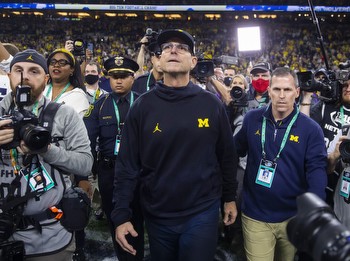





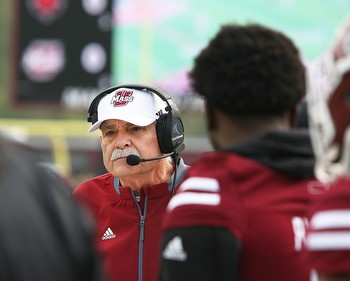
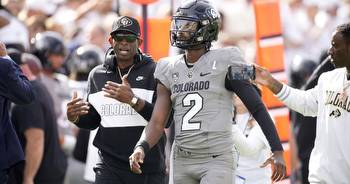

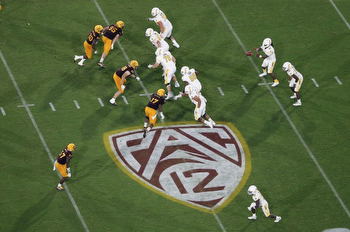
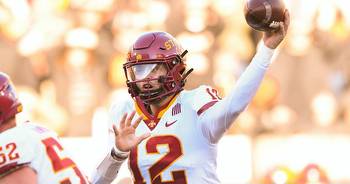

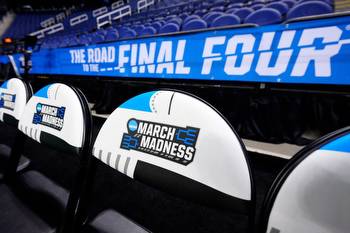

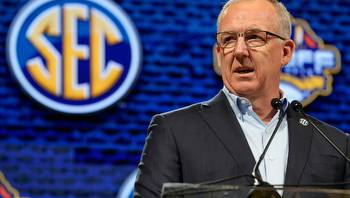
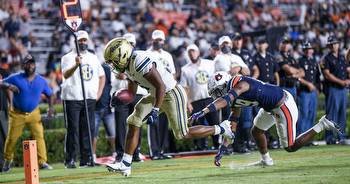



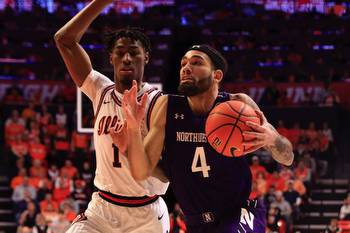
![Penn State needs coordinated NIL effort as James Franklin continues his crusade [opinion]](/img/di/penn-state-needs-coordinated-nil-effort-as-james-franklin-continues-his-crusade-opinion-1.jpg)
